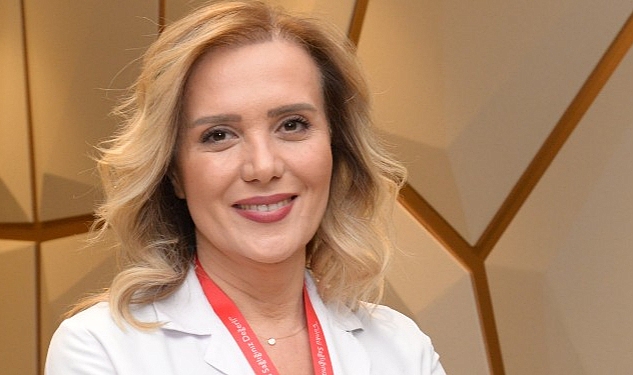
The seriousness of the diseases associated with kidney diseases around the world necessitates increasing social awareness. In line with this purpose, ‘World Kidney Day’ has been celebrated on the second Thursday of March every year, all over the world and in our country, since 2006.
This year’s slogan of this important day, where a main theme is determined every year, was determined as ‘Kidney Health for All-Be Prepared for the Unexpected, Support Vulnerable Sensitive Individuals’. This slogan was chosen considering the increased risk of kidney damage with the development of disasters such as pandemics and earthquakes that have been experienced worldwide in recent years. Professor from Memorial Şişli and Bahçelievler Hospitals Department of Nephrology. Dr. Ülkem Çakır gave information about the importance of kidney diseases and crush syndrome before the ‘World Kidney Day’.
The great burden of kidney diseases
Today, it is estimated that 850 million people worldwide have kidney disease from various causes. Epidemiological studies show that chronic kidney disease, which usually progresses slowly and is irreversible, causes at least 2.4 million deaths per year, even rising to the sixth place among the causes of death. The deterioration in kidney function that develops suddenly and threatens life in a short time is called acute kidney injury. If not treated promptly, the damage can progress to organ failure, drastically increasing mortality rates. Acute kidney injury affects more than 13 million people worldwide. 85% of these cases live in low- and middle-income countries, and it is estimated that 1.7 million people die each year because of this. Both acute and chronic kidney function loss; In addition to worsening the course of diabetes, hypertension, obesity and cardiovascular diseases, it is known that it contributes significantly to the increase in the risk of death in the presence of hepatitis, tuberculosis and malaria. In children, unlike adults, the sequelae of kidney diseases continue for a longer period of time and cause important medical problems in the later stages of their lives.
Increased risk of kidney damage in disasters
While trying to repair the damages of the Covid-19 pandemic, the earthquake disaster in our country recently injured everyone deeply. After direct traumas to vital organs during earthquakes, the most common cause of death is crush syndrome and its complications. Crush syndrome is a mixed picture that includes damage to striated muscles caused by trauma and the associated signs and symptoms. Systemic findings in patients with this syndrome differ according to the organ and system that is primarily affected by the picture. Although the most common findings are hypotension, shock, heart and respiratory failure, it should not be forgotten that the most vital complications are fatal heart rhythm disorder and acute kidney failure caused by the sudden increase in potassium in the blood.
The aim should be to keep the earthquake victim alive, not just to get them out of the rubble. Since the purpose of the post-earthquake search and rescue efforts is not just to get the earthquake victim out of the rubble, but to keep them alive, one should act very early and consciously at the first stage. It is important that a wounded person with crush syndrome or at risk of development is transported to the hospital within 12 hours at the latest after it is removed from the dent. Because, it is necessary to correct the regional damage immediately, to prevent the risk of shock, electrolyte disorder, kidney failure and to perform appropriate treatment.
If crush syndrome has developed, treatment should be started immediately. Precautions to be taken to prevent the development of crush syndrome and to minimize its complications have been determined. When a live earthquake victim is detected under the debris, as soon as the first contact is made, intravenous access should be established and fluid (isotonic sodium chloride) therapy should be started as soon as possible, and fluid therapy should be continued during the rescue. The amount of fluid to be administered is evaluated separately according to each earthquake victim and the special conditions of each earthquake (rescue time, age, weight, severity of trauma, air temperature, amount of urine, physical examination findings). After the earthquake victim is transported to the hospital, they are evaluated together by all branches. If necessary, surgical interventions are performed and precautions are taken in terms of infection. If there is no response to conservative treatments when acute renal failure develops, if urine output is insufficient, dialysis treatment is applied. The chosen dialysis treatment model is hemodialysis. The need for hemodialysis is usually temporary, but some earthquake survivors may need dialysis for life.
‘Be prepared for the unexpected, support vulnerable vulnerable individuals’ Despite the increasing burden of kidney diseases in the world, unfortunately, the inequality and incompatibility in receiving services for kidney health has still not been resolved. In the development of kidney diseases, social factors such as poverty, gender discrimination, lack of education, as well as the places where people were born, raised, lived and worked, play an important role. With the addition of disasters such as pandemics and earthquakes, the risk of developing kidney disease has increased even more. Therefore, national and international policies and strategies should be determined very well for these situations. In particular, it is of great importance to be prepared for these disaster situations and to support individuals who are at high risk of being affected.
Source: (BYZHA) – Beyaz News Agency

